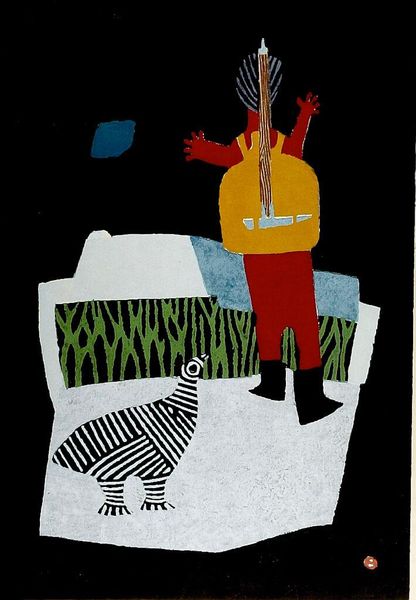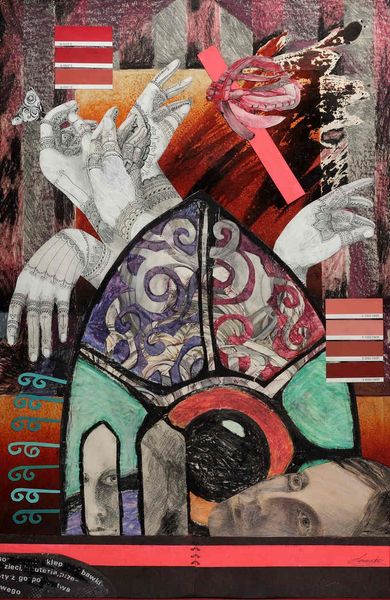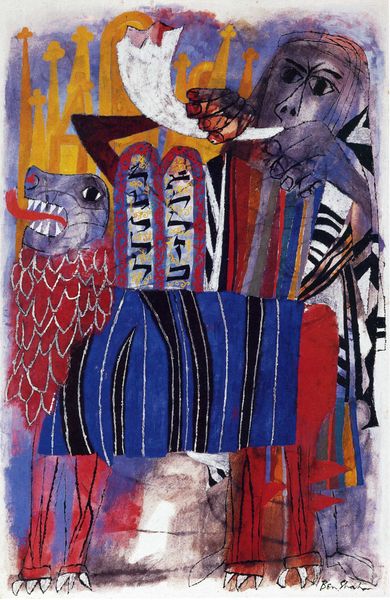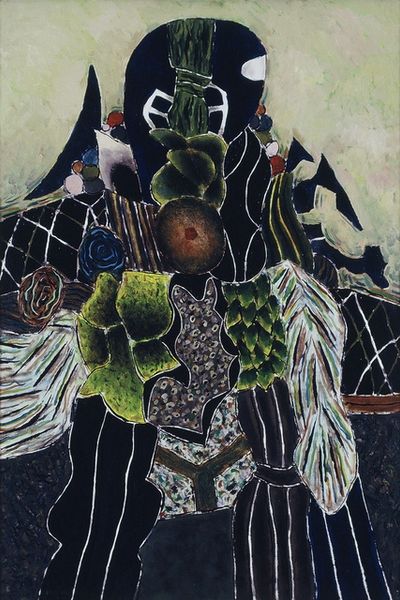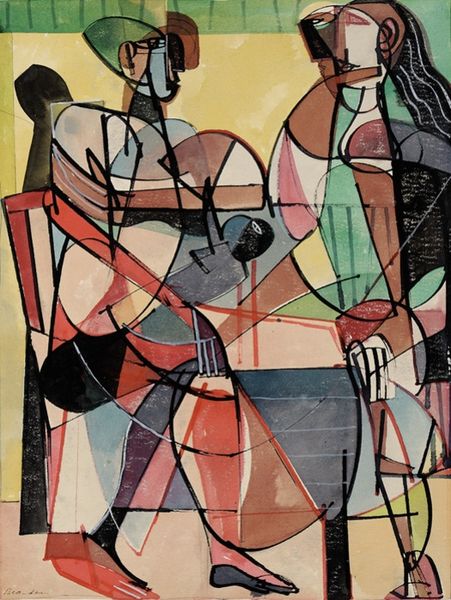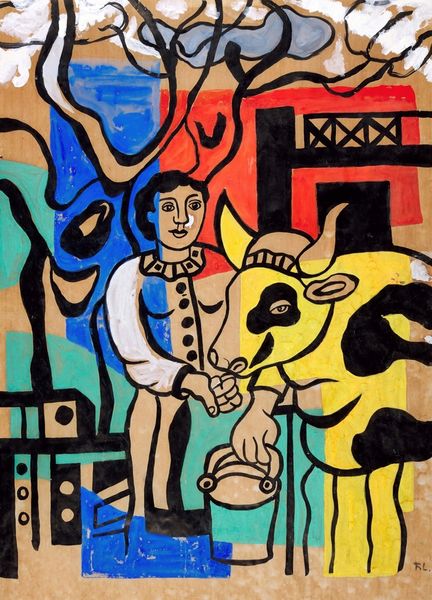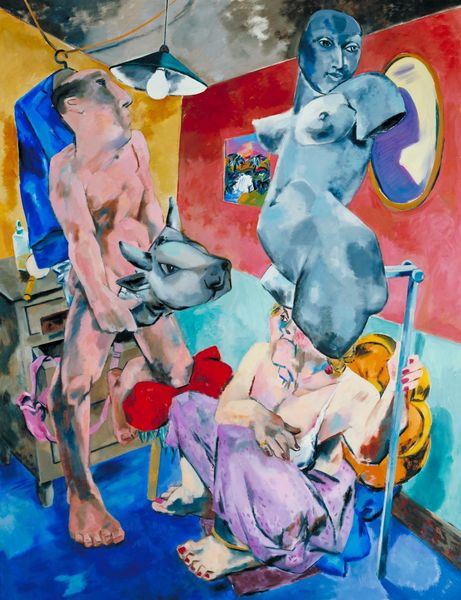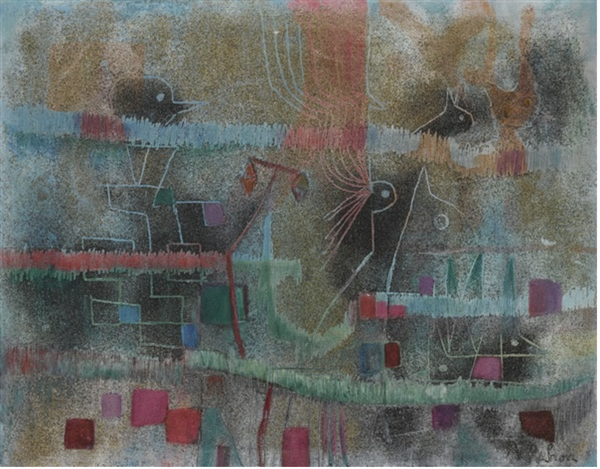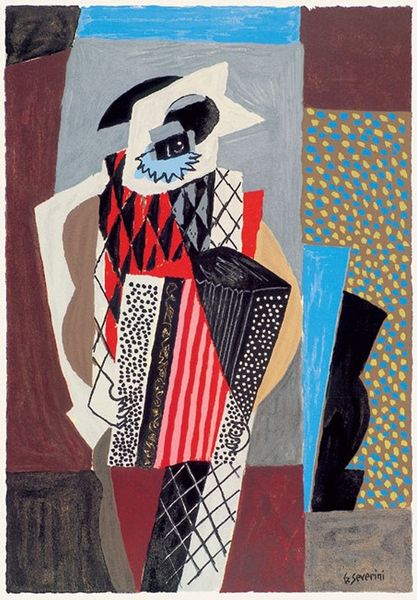
collage, paper
#
portrait
#
collage
#
figuration
#
paper
Copyright: Rosemary Karuga,Fair Use
Curator: Looking at Rosemary Karuga’s "Untitled" piece from 1996, what are your initial thoughts? It’s a mixed-media collage on paper. Editor: It feels like a narrative tableau. I’m drawn to the layered materiality, how scraps of paper form a shepherd, crook in hand, overseeing these rather droll-looking sheep. There's a real hand-made quality here. Curator: Karuga was working in Kenya at the time, during a period of significant cultural and artistic exchange. She gained recognition later in life, having started as a studio assistant and being encouraged to produce her own work. It reminds me of folk art traditions and art brut tendencies. Editor: Absolutely. There is a naive, almost homespun aesthetic. The use of discarded paper—presumably scraps of newspapers and magazines—adds another layer. It speaks to resourcefulness and the transformation of everyday materials into something quite powerful. Consider how the paper’s print contrasts with the images rendered through texture and tone to render shadow and light. Curator: Right. There’s an interesting tension between the traditional subject matter—the pastoral scene, the shepherd tending his flock—and the decidedly contemporary, urban material used to create it. Karuga pulls from daily lived reality for production and reinterprets classic themes through that unique material and political lens. Editor: The choice of collage itself speaks volumes. It's about piecing things together, rebuilding narratives, layering meaning onto discarded fragments. Each fragment gains new significance when its repositioned. The different papers come from various sources – look at that pharmaceutical packaging in the “ground” the sheep stand upon. Curator: These kinds of intimate narratives offered a powerful commentary in Kenya’s post-colonial landscape, where there was increasing emphasis on artistic expression, both through self-taught artists such as Karuga and state initiatives to embrace the importance of culture. It provided self-definition through creative interpretation of one’s social condition. Editor: Seeing art made this way allows one to be especially appreciative of process and accessibility. These material choices democratize art-making; inviting reconsideration about production, labor, and what constitutes "fine art." Curator: I agree. Ultimately, it prompts us to question the role art plays in defining and reflecting broader cultural identities and personal experience in very specific contexts. Editor: For me, it really makes you think about value: what we discard and what we choose to keep, and the potential for art to reimagine both.
Comments
No comments
Be the first to comment and join the conversation on the ultimate creative platform.
